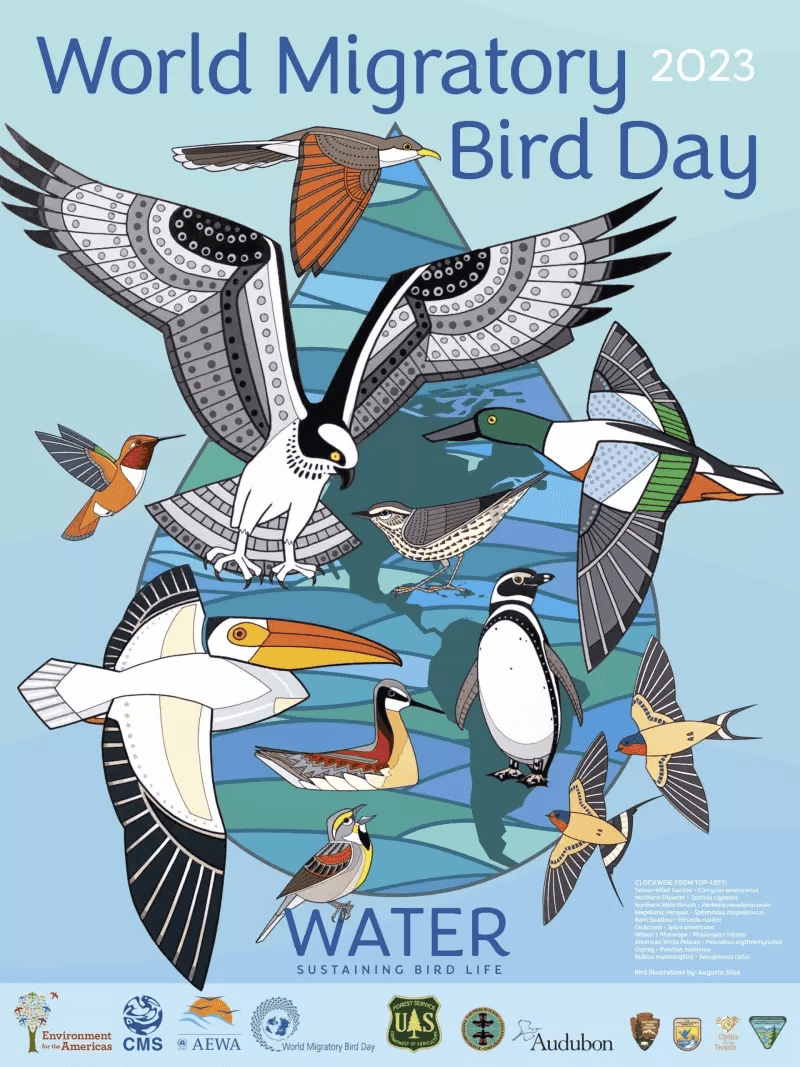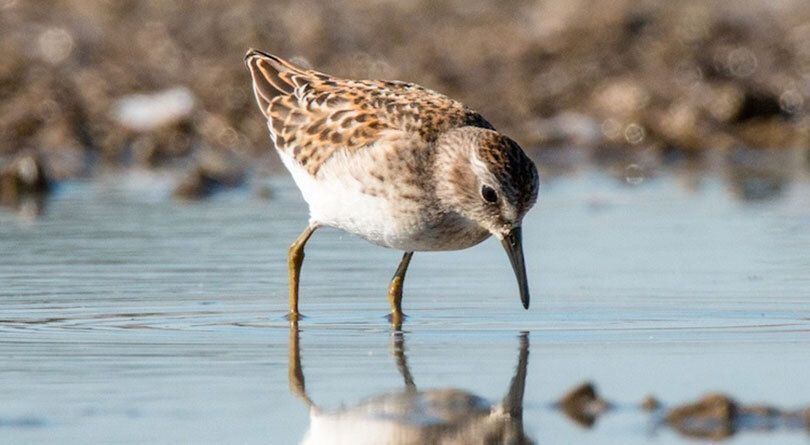General
Spring Migration: During March, Nebraska hosts one of the most spectacular examples of migration, the Sandhill Crane, along the Platte River between Grand Island and Lexington. The waterfowl migration is also an exciting natural event, particularly the concentrations of a half million Snow Geese and 100,000 Greater White-fronted Geese in the Rainwater Basins.
Fall Migration: Fall migration begins in July with shorebirds (numbers peak in August). Hawk migration begins in mid-September and continues through October. Warbler migration begins in late August and peaks in early September.
Calendar
The following calendar includes information about bird migration. Data is included for the months of peak migration: March, April, May, September, October, November. Please note that arrival times can be affected by weather patterns.
For the latest sightings and locations by county, please click here
May Bird Migration Information
The following is a partial list of birds that migrate through our area and approximate times to see them. Arrival times can be affected by weather patterns.
Early Month
- Rails: Virginia, Sora, King (rare)
- Piping Plover (Summer resident, nesting on Platte River sandbars & Midwest Power Plant ponds south of Council Bluffs)
- Migrants: Hudsonian Godwit, Stilt Sandpiper, Short-billed Dowitcher
- Terns: Forster's, Black
- Flycatchers: Least, Great-crested Flycatcher, Western Kingbird
- Thrushes: Swainson's, Gray-cheeked, Woodthrush (Summer Resident)
- Warblers (Summer Residents - best viewed in first 3 weeks of May): Northern Parula, Yellow-throated, Cerulean, American Redstart, Prothonotary, Ovenbird, Louisiana Waterthrush, Kentucky Warbler, Common Yellowthroat
- Scarlet Tanagers (Summer Resident)
- Rose-breasted Grosbeak (Summer Resident)
- Orioles (Summer Resident) - Orchard & Baltimore
Mid Month:
- Shorebirds: Black-bellied Plover Ruddy Turnstone, White-rumped Sandpiper
- Terns: Least (Summer Resident), Caspian
- Flycatchers: Olive-sided Flycatcher, Yellow-bellied
- Veery Trush
- Warblers (Summer Residents - best viewed in first 3 weeks of May): Northern Parula, Yellow-throated, Cerulean, American Redstart, Prothonotary, Ovenbird, Louisiana Waterthrush, Kentucky Warbler, Common Yellowthroat
- Veery Thrush
- Summer Tanagers (Summer Resident)
- Blue Grosbeak (Summer Resident)
Late Month:
- Sanderling (late May -1st week of June)
- Acadian Flycatcher
World Migratory Bird Day

International Migratory Bird Day started in 1993, and is celebrated annually on the second Saturday of May. It is a chance for conservationists, natural resource agencies, families and individuals to celebrate birds and bird migration.
The conservation theme this year is Water: Sustaining Bird Life, and focuses on the importance of water to migratory birds.
Virtually all migratory birds rely on water and some type of wetland habitat at some point during their life cycles. Lakes, rivers, streams, ponds, wetlands, coastal marshes, and oceans are vital for feeding, drinking, or nesting, and are extremely important as places to rest and refuel during migration.
Aquatic ecosystems are becoming increasingly threatened around the world, and so too are the migratory birds that depend on them. The increasing human demand for water, as well as pollution and the impacts of climate change , are having a direct impact on the quantity and quality of water resources and on the conservation status of many migratory bird species.
Source: Valerie Fellows, Migratory Bird Program Communications Coordinator, U.S. Fish & Wildlife Services.

